News
Altcoin News
Altcoin News
Browse all Altcoin related articles and news. The latest news, analysis, and insights on Altcoin.
Galaxy Digital's Massive Sale Shakes Bitcoin: Millions of Dollars Worth of Positions Liquidated
Cryptocurrency markets are poised to close the week in the red. The sharp sell-off in Bitcoin has severely weakened investors' risk appetite and wreaked havoc on leveraged trading. Galaxy Digital was one of the main actors in this sell-off.13,000 BTC transfer crashes the marketGalaxy Digital, run by Mike Novogratz, sent a total of 13,000 BTC to centralized exchanges in the last 24 hours. This transfer is estimated to be worth approximately $1.5 billion at current prices. According to blockchain analysis platform Lookonchain, the company withdrew $370 million worth of USDT from Binance, Bybit, and OKX, indicating that the transferred Bitcoins were being sold. This development follows a massive 40,000 BTC transfer that Galaxy Digital recently received from a whale wallet dating back to 2011. These BTCs, which had lain dormant for 14 years, have been reintroduced into the market and are now causing selling pressure. Bitcoin fell 3% due to these developments, falling to $115,200. Ethereum and XRP remained stable, while Solana (SOL) fell 3.3% to $177. The total cryptocurrency market capitalization decreased by 4.7%, falling to $3.84 trillion.Mass liquidations in leveraged positions: $522 millionThe outlook for liquidations is also bleak. A total of $522,042,272 worth of positions were liquidated in the last 24 hours. $382,102,784 of these liquidations came from long positions, while $139,939,456 came from short positions. In other words, approximately 73.2% of the liquidations occurred in long positions. Over the last 12 hours, $343,128,736 worth of positions were liquidated, 88.4% of which were long positions ($303,247,520 long, $39,881,236 short). Of the $58,272,040 liquidated in the last four hours, $37,129,752 involved long positions, while only $21,142,292 came from shorts. In the one-hour period, the total liquidation of $25,748,330 included $17,781,272 in long positions and $7,967,058 in short positions. Binance Takes the Biggest HitThe distribution of liquidations by exchange is also striking. The top 5 exchanges and their details are as follows:Binance: $118.7 million in total liquidations, 83.6% longBybit: $93.8 million, 91.02% longOKX: $66.9 million, 89.42% longGate: $26.6 million, 88.22% longHyperliquid: $19.3 million, 99.10% longThis data shows that excessively long positions on the largest exchanges are taking a heavy hit.Whale flight continuesOn-chain data shows that large investors (whales) are also gradually withdrawing from the market. The number of wallets holding 1,000 to 10,000 BTC fell from 2,037 to 1,982 in 10 days. This is a 2.7% decrease and the sharpest decline in the last six months.Furthermore, the increase in the amount of BTC sent to exchanges suggests that whales are opening the door to exit. The "exchange whale ratio" data rose from 0.50 on July 22nd to 0.52 on July 24th. This increase has generally resulted in selling pressure in the past.Despite all this devastation, the Bitcoin price is struggling to hold above $115,000. The decline in funding rates in perpetual transactions to neutral levels suggests that overheated leveraged structures are being cleared to some extent.
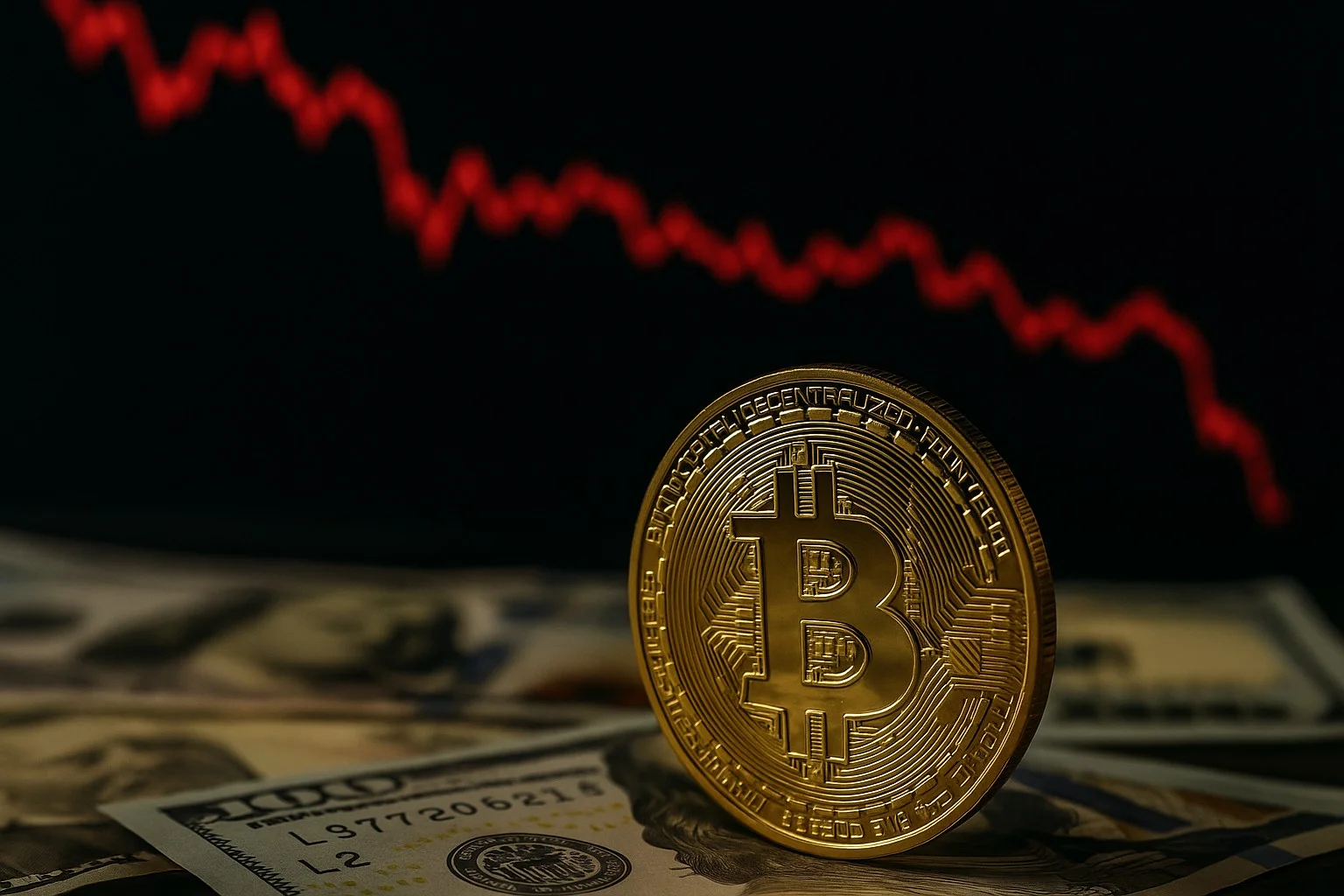
ALT Comment and Price Analysis 24 July 2025
ALT Technical Analysis Narrowing Triangle Structure The price of the coin is trading within a narrowing triangle formation, the upper border of which is around the range between $0.0388–$0.0398. This range also acts as the upper border of the triangle and a strong horizontal resistance. We have an intermediate support level of $0.0345, and the main support levels are $0.0311 and $0.0299 below.When the price breaks above the level of $0.0398, then we can consider the triangle formation complete to the upside, and the first price target will be the level of $0.0447. If this level also gets broken with strong momentum, the technical middle-term target will be the level of $0.0539.Unless this triangle pattern is invalidated, the price could fluctuate between support and resistance levels. However, if the price starts trading below the level of $0.0299, the triangle formation will be ruined, and we could test the price level of $0.0266 again.Key Levels:Resistance: $0.0388–$0.0398Support: $0.0345 → $0.0311 → $0.0299Formation breakout target: $0.0539These analyses, not offering any kind of investment advice, focus on support and resistance levels considered to offer trading opportunities in the short and medium term according to the market conditions. However, traders are responsible for their own actions and risk management. Moreover, it is highly recommended to use stop loss (SL) during trades.
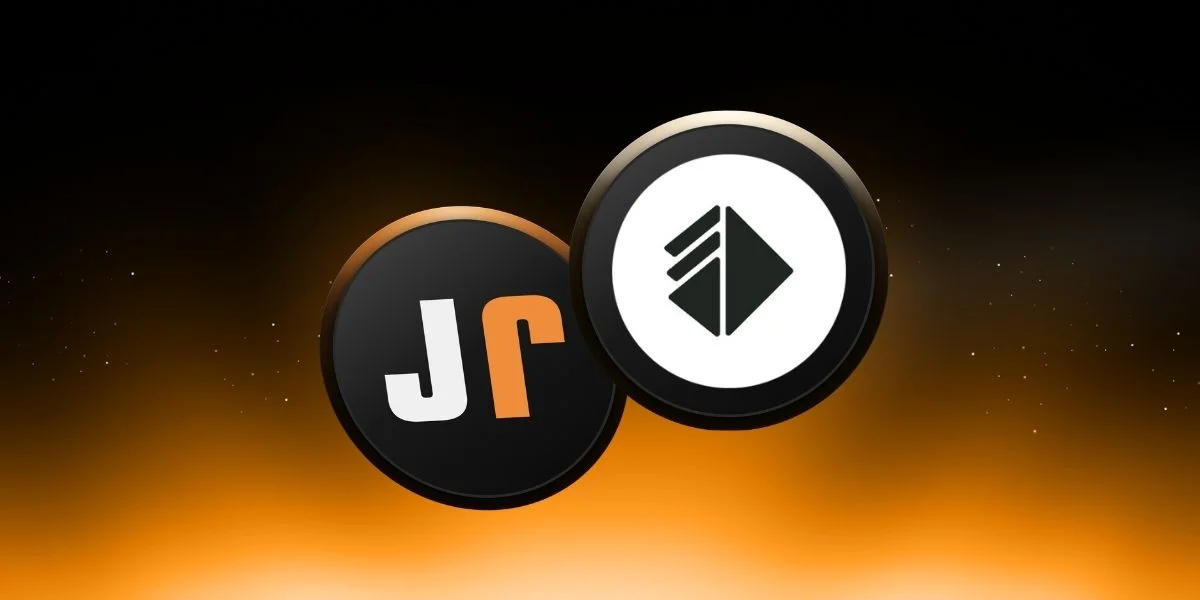
What is Algorand (ALGO)?
In the blockchain world, they say speed, security, and low cost don't usually go hand in hand... but Algorand is breaking the mold. Developed in 2019 by MIT professor and Turing Award-winning cryptographer Silvio Micali, Algorand stands out for its environmentally friendly nature and its ability to provide transaction finality within seconds.You might be wondering, "What is Algorand?" The answer is a blockchain network that is both fast, secure, and environmentally friendly. So, whose Algorand is? Developed in 2019 by MIT professor and Turing Award-winning Silvio Micali, this project focuses on solving classic blockchain problems. The Algorand network provides transaction finality in an average of 4 seconds and stands out for its low transaction fees; most transfers require only 0.001 ALGO. For those wondering what ALGO coin is and what ALGO tokens are for, let's explain: ALGO is both the network's native cryptocurrency and a tool that gives you a say in governance. In addition to being a carbon-negative blockchain that stands out with its energy-efficient structure, the network utilizes an innovative consensus mechanism called Pure Proof-of-Stake (PPoS). In short, Algorand is a modern and sustainable blockchain platform actively used in many areas, from DeFi and NFTs to digital identity and government projects. But it's much more than that.In this guide, we'll introduce you to all aspects of Algorand and explore the future and potential use cases of ALGO. If you're ready, let's get started!Algorand's Definition and OriginThe Algorand protocol was designed as an open-source, permissionless blockchain. Silvio Micali began working on the Algorand concept in 2017, following years of pioneering work in cryptography (e.g., his discoveries on verifiable random functions and zero-knowledge proofs), and launched the mainnet in 2019.When the Algorand mainnet launched in June 2019, the project team used a Dutch auction method to offer ALGO tokens to the public, unlike the traditional ICO model. In this system, the sale is initiated at a set price, and the price gradually decreases over time; investors can purchase at their desired level. The aim of this model was to ensure a more equitable distribution among participants: everyone doesn't have to be the first to arrive and pay the highest bid; everyone can buy at the price they deem "fair." This method also aimed to prevent sudden price manipulations such as "pump and dumps." Ultimately, 25 million ALGOs were sold at the end of the auction, and the project managed to raise approximately $60 million. This was a remarkable start for a Layer-1 network project with a decentralized infrastructure at the time. Algorand Inc., the company behind the project, is leading the protocol's engineering development under the leadership of Silvio Micali, while the Singapore-based Algorand Foundation is responsible for ecosystem growth, token economics, and community governance.Algorand uses a Pure Proof-of-Stake mechanism as its consensus method. PPoS system. Source: Algorand/Developers In this system, each ALGO holder is selected through a random selection process proportional to their holdings to propose and validate new blocks. Instead of only nodes holding the most tokens as in traditional Proof-of-Stake, Algorand's PPoS model provides a fair opportunity to all participants and avoids the "rich get richer" problem. There's no need for network nodes to compete for block production or for energy-intensive mining devices, making Algorand one of the most energy-efficient blockchains. Ultimately, the Algorand protocol has achieved a highly secure and distributed structure, preventing a single malicious majority from taking over the system, thanks to the PPoS consensus supported by the Byzantine Agreement.It's worth noting this point. Byzantine agreement (or byzantine fault tolerance (BFT)) is one of the cornerstones of blockchain technology. Byzantine agreement is a consensus model that allows honest participants in a distributed system to reach a correct decision together, even if some participants are flawed or malicious.The Algorand network is designed to produce solutions that work not only in theory but also in the real world. Thanks to the network's two-tiered architecture, basic transactions and simple smart contracts occur directly on the first layer. More complex applications and detailed smart contracts run on the second layer. This structure both maintains the system's speed and provides flexibility for different types of applications.Algorand's Algorand Standard Assets (ASA) feature allows anyone to easily create their own digital asset or token. For example, leading stablecoin projects like USDT and USDC chose the Algorand infrastructure over Ethereum because of its advantages such as high speed and low transaction fees.Today, the Algorand network is used in DeFi protocols, NFT marketplaces, digital identity solutions, and even applications that migrate traditional finance to the blockchain. It is used in many different areas. Thanks to these features, more than 2,000 institutions and projects around the world have already started choosing Algorand to develop more sustainable and scalable applications.Algorand's History: Major MilestonesLooking at Algorand's current state, it's clear that it's built on a robust development process and impressive strides. It has carved out a unique niche not only technically but also through its global collaborations, environmentally focused approach, and involvement in public projects. Now, let's take a look at the key milestones in Algorand's journey:2019: The Algorand network officially launched. In June, the mainnet was activated, and the ALGO token was offered to investors in the first public sale. This sale, unlike the traditional ICO model, employed a Dutch auction. In this system, the token price starts high and declines over time; participants can purchase at any price they choose. The goal was fair and balanced distribution. Ultimately, a total of 25 million tokens were sold at a price of $2.40 per ALGO, and the project raised $60 million. That same year, the ALGO price reached an all-time high of $3.28. Lansmanından bu yana ALGO fiyatı. 2020: In August, Algorand integrated smart contract infrastructure for the first time. With this system, called Algorand Smart Contracts (ASC1), both stateless and stateful smart contracts can run directly on Layer 1. This development makes Algorand much more suitable for DeFi and other decentralized applications.2021: This year, the Algorand ecosystem received significant financial support. The Algorand Foundation announced the $300 million Viridis DeFi fund to support projects in the DeFi space. This fund began supporting decentralized exchanges, debt-credit platforms, synthetic asset applications, and NFT initiatives. The Algorand Virtual Machine (AVM) update released that same year paved the way for more complex transactions in smart contracts.2022: Algorand began to make inroads into the public sector. El Salvador, in particular, entrusted Algorand with its blockchain infrastructure in many areas, from digital identities to public records. Similarly, the Marshall Islands chose Algorand for its national digital currency, the Sovereign (SOV). Thus, Algorand provided the technical foundation for the world's first sovereign digital currency. At the same time, its official blockchain partnership with FIFA and its commitment to sustainability-focused projects also increased its global visibility. It's worth noting that FIFA later abandoned Algorand in favor of developing its own blockchain. 2023–2024: These years represented a technologically advanced period for Algorand. First, State Proofs was introduced to establish secure and intermediary connections between different blockchains. This allowed off-chain clients to access reliable information without being part of the network. At the same time, zero-knowledge technologies like zk-SNARK were adopted to increase privacy and scalability. Algorand began integrating cryptographic tools based on these technologies in its 2024 roadmap. Finally, Layer-2 projects like Milkomeda A1 Rollup, which made Algorand compatible with Ethereum, were integrated into the mainnet, thus paving the way for Algorand's entry into a multi-chain universe.Why Is Algorand Valuable?Algorand is a comprehensive ecosystem that combines speed, sustainability, and user-friendliness. So, what exactly sets it apart? If you're wondering "Why Algorand?", the following sections detail ALGO's strengths and why it has attracted the attention of investors and developers. Instant Transaction FinalityAlgorand is designed to confirm blockchain transactions as quickly and irreversibly as possible. The system doesn't fork with each new block; transactions are written directly and permanently to the chain. This structure, which provides finality in an average of 4 seconds, particularly for financial transactions, creates a significant time and trust advantage.Low Transaction FeesThe cost of transactions made with ALGO is truly low. A single transfer typically requires only a symbolic fee of 0.001 ALGO. This offers a cost-effective solution for both micropayments and large-volume transactions. Compared to the high transaction fees on networks like Ethereum, Algorand makes a significant difference in this regard.Energy Efficiency and SustainabilityAlgorand is a carbon-negative blockchain that stands out for its environmentally friendly nature. Unlike networks that use "Proof of Work," Algorand's Pure Proof-of-Stake model consumes very little energy. The Algorand Foundation even offsets carbon emissions through partnerships with ClimateTrade, making the network carbon-negative. As a result, Algorand offers a sustainable alternative, both technologically and environmentally.Governance and staking opportunitiesYou can participate in the Algorand network not only by investing but also by participating in decision-making processes. ALGO token holders can participate in governance votes by locking their tokens for specific periods. This system gives them a say in the future of the network and allows them to earn returns (staking rewards). It also offers passive income opportunities. ALGO governance process. Advanced Smart Contract Capabilities (ASC1)Algorand offers both speed and security by running smart contracts directly on Layer 1. This system, called Algorand Smart Contracts (ASC1), can automate simple transactions and form the basis of complex decentralized applications. Written in Algorand's proprietary language called TEAL, these contracts offer predictable transaction fees and high security. They are preferred across a wide range of platforms, from DeFi to NFT projects.Rich Ecosystem and Use CasesAlgorand not only provides a technological infrastructure but also boasts a growing ecosystem. For example, leading stablecoins like USDT and USDC are traded on this network in the format of Algorand Standard Assets (ASA). In the DeFi space, platforms like Algofi, Tinyman, and Folks Finance, and on the NFT side, many art and collectible projects, benefit from Algorand's speed and low cost. Traditional finance and public sectors also prefer Algorand. The Marshall Islands' digital currency, SOV, and official blockchain projects in El Salvador are being developed on this network. All of this paints a compelling vision for the future of ALGO coin. Projects in the Algorand ecosystem. Source: CoinBureau Who Founded Algorand?The founder of the Algorand project is Silvio Micali, a world-renowned computer scientist and cryptography expert. If we ask, "Who created Algorand?", the answer is Silvio Micali and the experienced team he leads. Micali is a professor at MIT (Massachusetts Institute of Technology) and won the Turing Award, considered the Nobel Prize in computer science, in 2012 for his contributions to cryptography. He is one of the pioneers of modern cryptography, co-inventing technologies such as zero-knowledge proofs and cryptographic randomness (VRF). Silvio Micali began working on the theoretical foundations of Algorand in 2017 and launched the platform in 2019.The development of the Algorand ecosystem proceeds through two main structures: Algorand Inc. and the Algorand Foundation. Founded by Silvio Micali, Algorand Inc. is the company responsible for the protocol's core engineering development and collaborations. The Algorand Foundation, on the other hand, is known as the nonprofit organization that manages the project's decentralized governance processes, ecosystem growth, and ALGO token economy. The Foundation plays an active role in issues such as updating network parameters through community votes, grant programs, and educational initiatives. For example, in 2020, the Algorand Foundation launched its community governance program, enabling ALGO holders to vote on network decisions.Frequently Asked Questions (FAQ)For those hearing about Algorand for the first time or considering investing in ALGOs, it's natural to have some basic questions. If you're wondering, "How does it work?", "What exactly does the token do?", "Is staking difficult?", or "Is it truly environmentally friendly?", you're not alone. In this section, we've answered the most frequently asked questions about Algorand. If you're ready, let's take a quick look.What is Algorand and how does it work?: Algorand is a modern blockchain network with a secure, fast, and decentralized structure. Without the need for energy-consuming processes like mining, network transactions are verified by users randomly selected from among ALGO holders. Thanks to this structure, transactions are finalized within seconds, and the system is highly energy-efficient.What does the ALGO token do?: ALGO is the native cryptocurrency of the Algorand network. It serves many functions, from paying transaction fees to running smart contracts and generating new blocks. It's also possible to participate in governance and earn passive income by staking ALGO.What's different about the Algorand Proof-of-Stake system?: Algorand's Pure Proof-of-Stake (PPoS) system differs slightly from traditional methods. Validators are randomly selected, meaning everyone, not just large investors, has the opportunity to participate in the system. This makes the network more equitable and decentralized.How to stake ALGO?: Staking ALGO is quite simple. You can hold your ALGO in official wallets like Pera Wallet or on some exchanges, lock them during governance periods, and earn rewards by participating in voting. You can easily trade by holding it in your own wallet or through platforms that offer automatic staking.Is Algorand energy efficient?: Yes, very much so. Because the network doesn't mine and operates with the PPoS algorithm, it consumes very little electricity. Furthermore, the Algorand Foundation offsets its carbon emissions, making the network carbon neutral—or even carbon negative.What applications are being developed on Algorand?: A wide range of applications are being developed on Algorand. Projects such as decentralized exchanges and lending protocols in the DeFi space, digital collectible platforms in the NFT world, and central bank digital currencies on the institutional side are choosing Algorand. For example, popular stablecoins like USDT and USDC are integrated into the Algorand network and operate with the advantages of high speed and low transaction fees. Similarly, the national digital currency of the Marshall Islands, SOV, was implemented on the Algorand blockchain. Furthermore, thousands of organizations in various fields, from the gaming industry to supply chain applications, are using the Algorand blockchain to develop scalable and reliable applications.For more information on Algorand and environmentally friendly blockchain technologies, follow our JR Kripto Guide series.
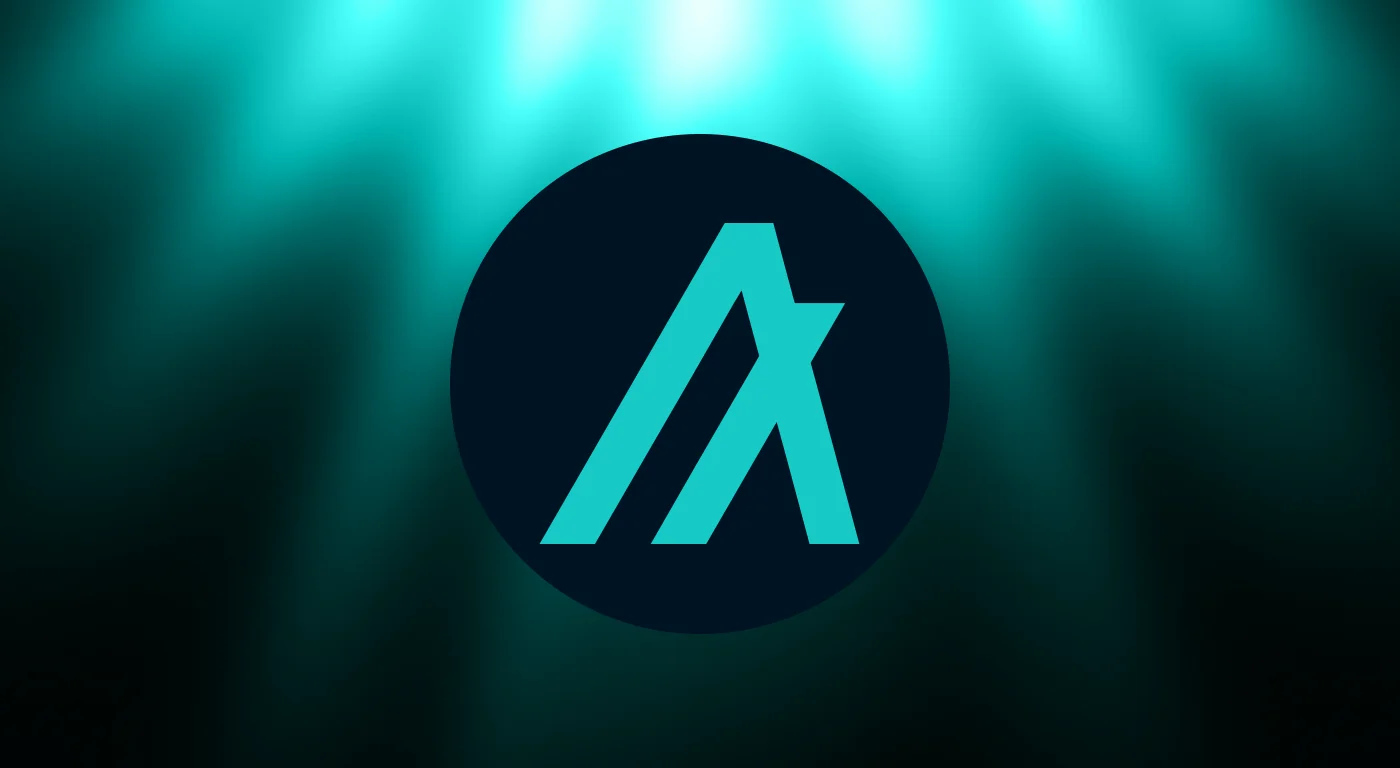
Another Company Greenlights XRP Investment! $20 Million Strategy Announced
Institutional adoption of cryptocurrencies is accelerating. Most recently, Nature's Miracle, a vertical farming technology company, attracted attention with its $20 million investment in XRP. This move demonstrates confidence in the growing use of XRP in institutional payment infrastructures and its advantages.Nature's Miracle Makes Institutional XRP MoveNature's Miracle announced in a press release that it plans to add up to $20 million in XRP to its treasury. This strategic investment will be financed through equity financing, which was realized through the company's SEC-approved S-1 registration statement. CEO James Li stated that this initiative is a strategic move to reduce the costs of international payments in the long term, leverage the speed and liquidity advantages of XRP, and establish a stronger interaction with the Ripple network. Li said in a statement, “Following the GENIUS Act, signed by President Trump on July 18, 2025, more institutions began viewing cryptocurrencies as treasury assets. The interest of major players like Banco Santander and American Express in XRP clearly demonstrates the potential of this token.”With this move, Nature’s Miracle, one of the first companies to be listed on a US stock exchange, has directly incorporated XRP into its treasury strategy. Initially, XRP will be purchased with funds from the S-1 filing. However, the company stated that it may increase its XRP reserves through new fundraising, share issuance, or structured financing methods in the future.In addition to all this, Miracle plans to increase the use of XRP within the Ripple ecosystem. Instead of simply holding its tokens in reserve, the company could also invest them through methods such as staking and generating additional income.Institutional XRP adoption is growingNature’s Miracle’s move stands out as part of the institutional XRP trend. Many public companies have recently begun taking similar steps:Nasdaq-listed Trident is working on a massive $500 million XRP treasury plan.Webus announced in its filing with the SEC that it aims to establish a $300 million XRP-focused digital asset operation.VivoPower secured funding for a $121 million XRP treasury.Thumzup Media approved a $250 million investment plan in digital assets.XRP recently broke recordsFor those unfamiliar, it's worth reminding: XRP is a digital asset developed by Ripple that offers speed and cost advantages, particularly in international money transfers. XRP, which stands out as an alternative to the traditional SWIFT system in interbank transactions, stands out with its ability to process transactions in seconds. It is actively used by many financial institutions via the RippleNet network.As of July 24, 2025, the price of XRP is trading at $3.16. During the day, the price fluctuated between $2.99 and $3.36. XRP has a total market capitalization of approximately $187.4 billion, with a 24-hour trading volume exceeding $16.8 billion. The XRP price recently reached an all-time high of $3.65 on July 18, 2025.
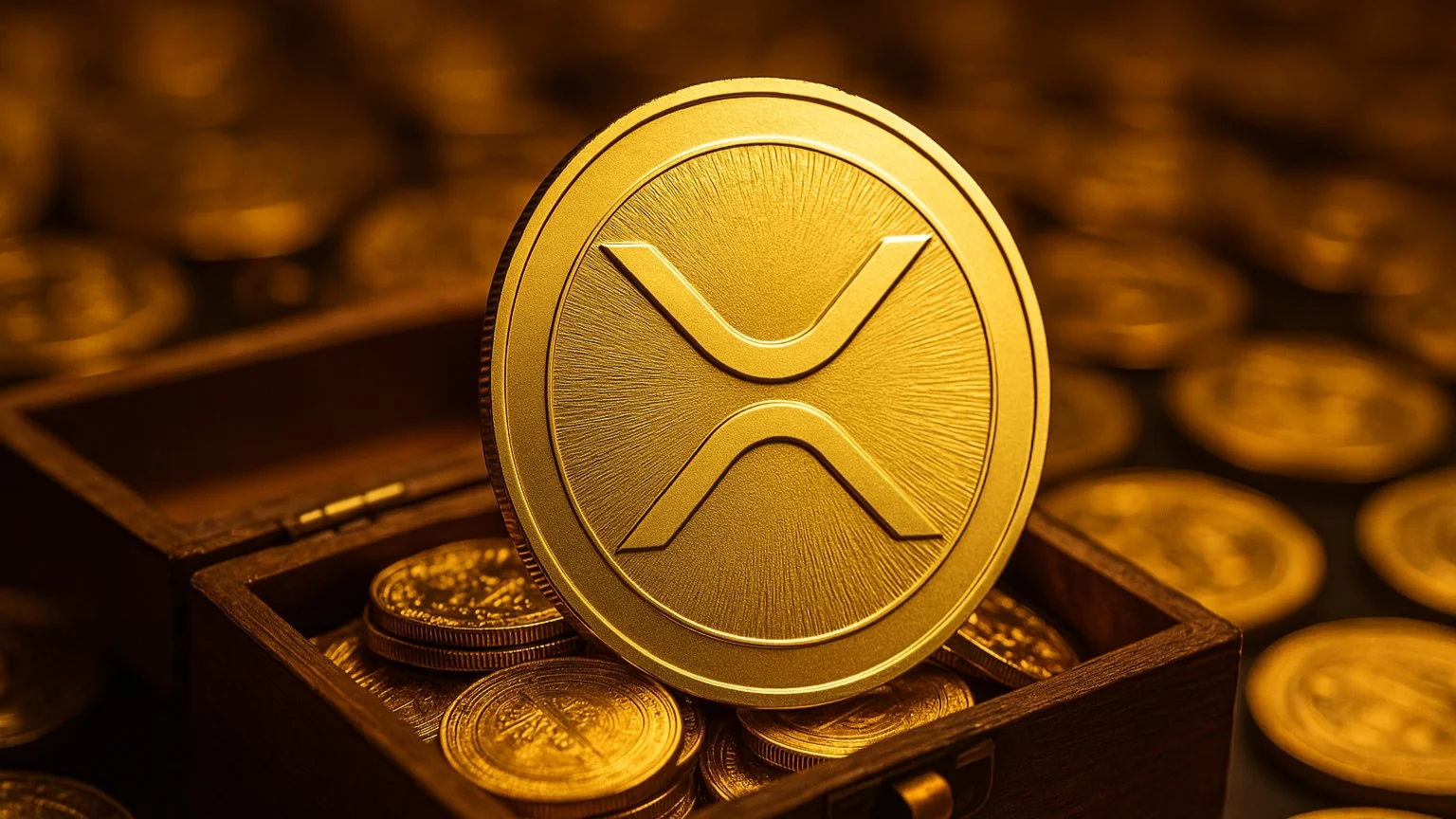
PUMP Token Airdrop Crisis: Price Drops
Pump.fun, which runs on the Solana network and allows users to create meme coins in minutes, has attracted significant attention since the beginning of 2024. However, the project's own token, PUMP, has only recently launched. The airdrop delay, early investor errors, and increasing selling pressure have already shaken the project. Private investors lost $6 million due to poor timing and the sudden 12% price drop are increasing frustration within the community.Pump.fun investors are disappointed with the PUMP airdropPUMP, one of the most talked-about projects in the cryptocurrency market in recent days, is facing a significant erosion of trust due to both investor errors and the project team's decisions. The airdrop delay and millions of dollars in losses from early investors have led to a sudden 12% drop in the token's price. PUMP quickly rose to prominence as a meme coin project, but it is now undergoing a serious stress test. Early investor makes a huge mistake: $6 million evaporatesMeanwhile, according to on-chain data, a private investor named "PUMP Top Fund 2" transferred approximately 2 billion PUMP tokens (currently worth $12.8 million) to Binance eight days ago. However, because Binance had not yet listed the PUMP token on the spot market, these tokens sat dormant in the exchange's wallet. During this period, the token's value halved, falling to $6.9 million. The investor bought the tokens back approximately 23 hours ago and transferred them to Bybit. However, due to the timing error, they missed a sale opportunity of approximately $6 million.The selling wave, which wasn't limited to this incident, continued with the sale of 1.25 billion PUMP tokens from two different wallets. These tokens, worth $3.8 million, were sold at an average price of $0.00305, resulting in a loss of approximately $1.2 million. Airdrop delay crashes pricesOn the same day, PUMP co-founder Alon Cohen announced in a livestream addressing the community that the token airdrop would not take place "anytime soon." Cohen stated that their team's priority was to provide a meaningful airdrop experience, but that they were currently focused on growing the network and increasing transaction volume. The community reacted swiftly to this announcement, and the PUMP token price dropped 12% in one day, falling below its ICO price of $0.004. The token has lost over 50% of its value from its post-ICO peak of $0.0067. The PUMP token was introduced as the native token of the Pump.fun platform, which launched on the Solana network in early 2024. The platform allowed users to create their own meme coins in minutes, reaching nearly $1 billion in transaction volume. However, the token's actual use cases have yet to meet expectations.There is growing frustration within the community. One early adopter, who had generated over $1 million in trading volume, expressed his disapproval, saying the team had “turned their backs on their backers.” Another user noted that the PUMP price had fallen to an all-time low of $0.00337, emphasizing that without new airdrop incentives, demand should be based solely on the project’s actual benefits.

GOAT Comment and Price Analysis July 23, 2025
GOAT Technical AnalysisWhen we analyze the chart on a daily timeframe, it can be clearly observed that GOAT is stuck within a narrowing triangle formation. The breakout direction here will have a determining role for the next phase of the price. The closest support area seems to be the price level of $0.13334. If broken downwards, the price of the coin could drop to the range between $0.11–$0.10. Narrowing Triangle Formation $0.21976 and $0.2265 could stand out as strong resistance levels if this triangle formation gets broken upwards. Note that this area served as a strong sell zone and the price got rejected from this resistance many times in the past.We have a strong support area between the levels of $0.11838 and $0.09510, and this range is important as it is close to the lower border of the triangle formation. In case of a pullback, the price can retreat to the levels of $0.08384 and then to the range between $0.06500–$0.03800.These analyses, not offering any kind of investment advice, focus on support and resistance levels considered to offer trading opportunities in the short and medium term according to the market conditions. However, traders are responsible for their own actions and risk management. Moreover, it is highly recommended to use stop loss (SL) during trades.

PI Comment and Price Analysis July 23, 2025
PI Technical AnalysisWhen we analyze the PI chart on a daily timeframe, we can clearly see that it has still been trading within a descending channel. The strongest support level to watch is the price zone $0.40–$0.44, which served as a strong buy area in the past. If broken downwards, the price could drop to much lower levels, seeking a new low. Falling Channel Structure In a scenario where the price could surge to higher levels, the first resistance level the price will possibly test is $0.5349, which can be technically considered a key level as it intersects with the upper border of the descending channel. If this upper border is broken above, the price could gain momentum and surge to the levels of $0.5812 and $0.6437 respectively. Remember that the level of $0.640 is an area where the price saw strong sell pressure in the past.In short, if PI manages to break above the channel, then it will be possible to talk about a medium-term trend reversal. If such a breakout occurs, the levels $1.0939 and $1.2354 could be the next price targets ahead.These analyses, not offering any kind of investment advice, focus on support and resistance levels considered to offer trading opportunities in the short and medium term according to the market conditions. However, traders are responsible for their own actions and risk management. Moreover, it is highly recommended to use stop loss (SL) during trades.
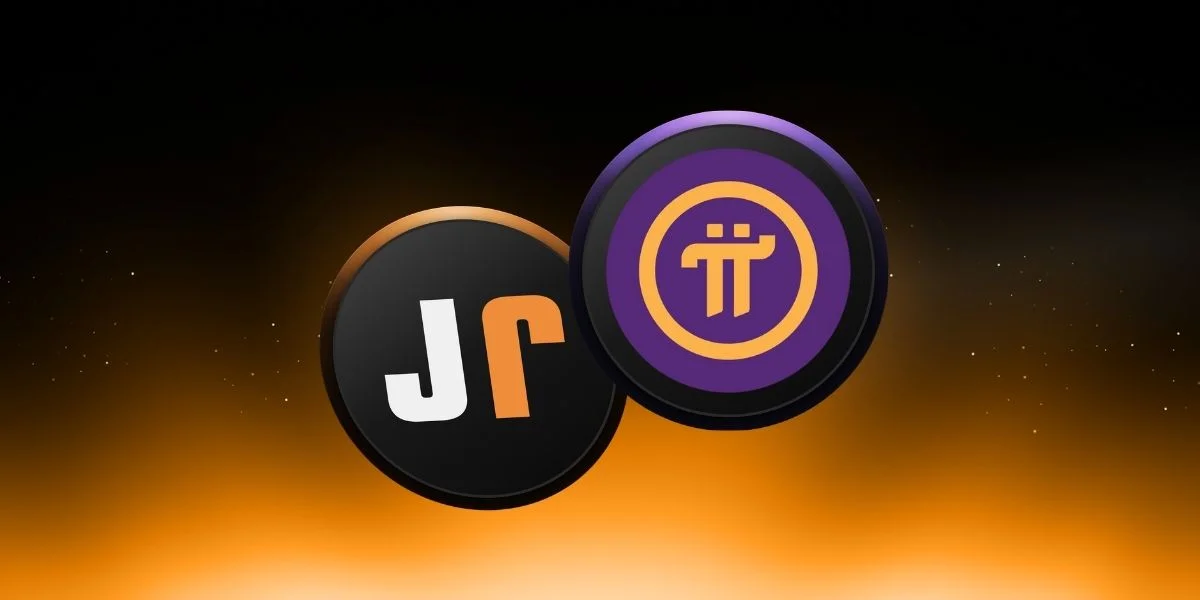
What is Injective (INJ)?
Dozens of new projects are announced daily in the cryptocurrency world. However, only a few truly leave a lasting impact. Injective (INJ) is one of them. It's not just a Layer-1 network; it offers a powerful infrastructure that combines speed, scalability, and modularity specifically for the needs of decentralized finance. So, what is Injective? Injective offers much more than just your average Layer-1 blockchain: It's building a fast, scalable, modular ecosystem focused on decentralized finance (DeFi).What is Injective platform? Injective is a Layer-1 blockchain network built with the Cosmos SDK and powered by the Tendermint consensus protocol, promising developers and users far more than traditional decentralized applications (dApps). This project, particularly notable for its on-chain order book infrastructure, is optimized for decentralized exchanges, derivatives trading, oracle services, and multi-chain dApps.So, what is INJ coin, and why is it attracting so much attention? Injective's native token, INJ, serves a multitude of roles, from network governance and staking to transaction fees and developer incentives. Its deflationary nature also attracts long-term investors. As such, questions like "What is the INJ token useful for?" and "What is the future of INJ coin?" are constantly on investors' minds.In this article, we'll explore all the questions you're wondering about the Injective network and the INJ token step by step. What is the Injective platform, how does it work, what areas does it address, why is it valuable, who's behind it, and what does it promise for the future? We'll explain all of this in clear, technical detail.Ready? Let's get started.Injective's Definition and OriginInjective (INJ) is a modular layer-1 blockchain network specifically designed for decentralized finance (DeFi) applications. Injective, distinguished by its high speed and interoperability, is built on the Cosmos SDK and utilizes a Tendermint-based Proof-of-Stake consensus mechanism. This allows it to reach over 10,000 transactions per second and provide instant finality. The Injective network offers developers powerful plug-and-play DeFi modules, enabling the rapid and easy creation of next-generation decentralized applications (dApps). INJ is the network's native token and serves as the foundational asset that sustains the Injective ecosystem.The Injective network can be described as a "blockchain built for finance." The decentralized exchange (DEX) infrastructure is optimized for derivatives and other financial applications. The network's foundations were first laid in 2018 through Binance's incubation program and launched by Eric Chen and Albert Chon. Developed on the Cosmos SDK, Injective operates with Tendermint consensus, offering high efficiency and security. This architecture ensures extremely low transaction fees (in fact, nearly zero for end users) and fast transaction verification. The Injective network officially launched with its mainnet launch in 2021. Injective's working mechanism. Source: Messari Injective's aim is to address issues such as scalability and high transaction fees experienced in traditional blockchains. This network aims to minimize the problems of front-running and MEV (Maximum Extractable Value), which are particularly common in DeFi applications.Front-running, simply put, is a tactic employed by bots or miners who attempt to gain an advantage by intervening just before someone sends a transaction. MEV, on the other hand, is a situation where validators maximize their profits by choosing which transactions to include in blocks and in what order. Injective's on-chain order matching system makes such situations difficult. Because transactions are matched using a dedicated scheduling mechanism, it's impossible for anyone to manipulate the order.This innovative approach aims to provide a more equitable, transparent, and user-friendly environment for DeFi users. In short, Injective stands out as a fast and integrated Web3 infrastructure specifically designed for financial applications.Injective's History: Key MilestonesBehind every successful blockchain project lies a remarkable journey. Injective is no exception. The transformation Injective has undergone, from its initial idea to attracting the attention of major investors, to its mainnet launch, and finally to a robust ecosystem fund, marks a significant building process. In this section, let's take a step-by-step look at how Injective evolved into its current state.2018: Injective's story began in 2018. The project was one of the early-stage initiatives supported by Binance Labs, a rising name in the crypto world at the time. Founders Eric Chen and Albert Chon gradually began developing this project, which aimed to build the future of decentralized finance.2020: 2020 was a turning point for Injective. In October, a public INJ token sale was held on Binance Launchpad, raising approximately $3.6 million in funding. At the end of that year, the first public testnet, called "Solstice," was launched. This testnet was the first environment where real users could experience the system. 2021: In 2021, Injective completed its long-term testnet development and officially launched its mainnet (Canonical Chain) in November 2021. With this launch, users gained a fully decentralized environment where they could trade with real assets on Injective.2022: 2022 was a year of integration for Injective. In December, Injective integrated the Wormhole bridge into its network, enabling multi-chain support. This made assets from Solana and various EVM-based blockchains portable to the Injective network. That same year, Injective took a major step forward for developers, enabling CosmWasm smart contract support. Developers could now write their own custom dApps on the Injective network.2023: As 2023 entered, Injective arrived with a surprise. In January, the $150 million Injective Ecosystem Fund was announced. This fund: Created with the participation of major investors such as Pantera Capital, Jump Crypto, Kraken Ventures, and Binance Labs, it aimed to pave the way for new projects within the Injective ecosystem. The Open Liquidity Program, launched that same year, began distributing rewards to users who provide liquidity to decentralized exchanges on the network. This created a more attractive environment for both developers and liquidity providers. Kaynak: Injective/Medium 2024: 2024 was a year of "leveling up" for Injective. A major network update called "Flywheel" was implemented in January 2024. This update made Injective's modular structure much more robust, opening up new tools and development areas for developers. One of the most notable innovations was the integration of Real World Assets (RWA) on-chain. The Flywheel update also significantly strengthened cross-chain interoperability. For example, Injective's order book module can now directly interact with other IBC-compatible chains, making cross-chain asset exchanges much smoother and faster. Furthermore, the update also restructured the INJ token's tokenomic model. More burn mechanisms were introduced within the token economy, strengthening control over the circulating supply. This further clarified INJ's deflationary nature and marked a significant step toward long-term value appreciation.Why Is Injective Valuable?Injective has several key features that distinguish it from similar projects. It's not just a Layer-1 blockchain; its high-performance infrastructure, multi-chain support, and user-friendly approach have earned it a solid place in the DeFi world. So, if you're wondering what its advantages are, let's take a look:On-chain order bookOne of Injective's most striking features is its true on-chain order book infrastructure. This means it offers a decentralized experience, yet at the speed of a centralized exchange (CEX). Users can enter their orders and transparently match them on-chain, just like traditional exchanges, when trading spot or derivatives.Keeping all transactions on the blockchain ensures the system is transparent and auditable. Furthermore, thanks to an advanced matching engine, orders are processed with very low latency. Mechanisms that work against users, such as front-running or MEV, are minimized by Injective's architecture, providing users with a fairer and faster trading environment. In short, Injective takes the DEX experience to the next level. StepComponentFunction1User (Wallet)Submits a buy or sell order and signs it using their wallet.2RelayerReceives the signed message and broadcasts it to the Injective network.3Full NodeVerifies the transaction and adds it to the mempool if valid.4Validator NodeIncludes the order in the next block and executes it immediately (especially if it's an order match or cancellation).5On-chain Order BookActively updates the order book based on new, matched, or canceled orders.A rich product range: Spot, derivatives, and prediction marketsInjective isn't just a buy-sell platform. The network's architecture opens the door to a variety of financial instruments. In addition to spot transactions, the Injective infrastructure also supports advanced products such as derivatives, perpetual contracts, futures, options, and even prediction markets.This diversity allows developers to build their own decentralized derivatives exchanges, and users can access instruments similar to those on traditional exchanges, completely permissionless. One of Injective's core modules, the on-chain order book infrastructure, enables these transactions to be executed directly on-chain, providing a secure and fast user experience. Being able to interact with so many financial products on a single network makes Injective much more than just a DEX.Multi-chain support and interoperabilityAnother valuable element of Injective is its multi-chain capability. Because it's part of the Cosmos ecosystem, it supports the IBC (Inter-Blockchain Communication) protocol. This allows Injective to exchange data and assets directly with other Cosmos-based chains.But it's not just limited to Cosmos. It can also integrate with popular chains like Ethereum, Solana, Polygon, and Avalanche. The Wormhole integration, in particular, makes it quite easy to transfer assets from external networks to Injective.Furthermore, thanks to Injective's own ERC-20 bridge, Ethereum tokens are also directly supported. In other words, it's one of the rare projects that bridges both the Cosmos and EVM worlds.This powerful interoperability provides a significant advantage for both users and developers. Developers can build multi-chain dApps on Injective that bring different chains together. Users can access the liquidity of different blockchains on a single platform. In essence, Injective eliminates interchain boundaries as much as possible. INJ Token Usage AreasSo, let's get to the frequently asked question: What is INJ coin, and what does it do? INJ, Injective's native token, serves as the fundamental building block of the network. It serves many functions, both ensuring network security and allowing users to actively participate in the system.First, it's used for staking. INJ holders can contribute to the security of the network by delegating their tokens to validators and earning staking rewards in return. Staking INJ means both generating passive income and supporting the operation of Injective.Secondly, transaction fees are paid in INJ. Every transaction made on the network, whether placing an order or calling a smart contract, carries a small fee, which is collected directly in INJ.The third important use case is governance. Because INJ is also a governance token, token holders can vote on network developments and voice their opinions on updates. This gives them a direct say in decisions about Injective's future.INJ also serves as a utility asset in various dApps within the Injective ecosystem. For example, you can pay fees with INJ when trading on decentralized exchanges like Helix and use it as collateral on some derivatives platforms.Finally, INJ has a deflationary model. This means the total circulating supply decreases over time. This is because a portion of the transaction fees collected from applications on the Injective network are regularly burned. This mechanism increases the token's potential to maintain its value over the long term.In summary, "What is the use of the INJ token?" The answer to the question is this: It serves many critical roles, from staking and governance to transaction fees and internal DApp usage. It is a functional and valuable asset for both investors and developers. Injective's use cases for the INJ token. Source: Injective Ecosystem Funds and Developer IncentivesWhat makes a project strong isn't just its technology, but also its support and growth potential. Injective is extremely ambitious in this regard. One of the biggest reasons for optimism about the future of INJ coin, in particular, is the extensive financial support provided to the project.The Injective Ecosystem Fund, announced in 2023, is a concrete example of this support. This massive $150 million fund is funded by industry heavyweights such as Pantera Capital, Jump Crypto, Kraken Ventures, and KuCoin Labs. Its goal is to support teams developing new projects within the Injective and Cosmos ecosystems both financially and strategically.The fund not only provides investment but also offers mentorship, technical guidance, and collaboration. It represents a significant opportunity, particularly for teams developing new DeFi protocols, cross-chain applications, or infrastructure projects.Furthermore, various programs are also in place to incentivize network users and liquidity providers. For example, developers are supported periodically with mining rewards, special bonuses for liquidity contributions, or events like hackathons.All of these initiatives paint a positive picture for the future of INJ coin. Considering the network's rapid development, technical infrastructure, and community engagement, Injective can be expected to gain a significant place in the DeFi space.Who is Injective's Founder?So, if you ask "Who owns Injective?", we can say that it has a highly competent team behind it. The Injective project was launched by Injective Labs, which oversaw the core development process. Co-founder and CEO Eric Chen, with his deep knowledge of finance and blockchain technologies, is one of the individuals who shaped Injective's vision. Another co-founder, Albert Chon, is Injective Labs' CTO and is responsible for the network's technical infrastructure. Chon's engineering background has made significant contributions to the project, particularly regarding the network's scalability and security.The Injective team has worked closely with both the Ethereum and Cosmos communities since the project's early stages. This has enabled Injective to successfully integrate key technical building blocks, such as EVM compatibility and IBC integration, into the system. The project was initially born in Binance Labs' incubation program in 2018 and has since received support from a wide range of actors, from prominent investors like Mark Cuban to other projects within the Cosmos ecosystem.Today, Injective Labs continues to develop core components, but control of the network has been transferred entirely to the community. Injective's governance process is shaped by the votes of INJ token holders. Community members can vote on technical updates or changes to economic parameters through proposals called "Injective Improvement Proposal (IIP). For example, the major Flywheel update, which took place in 2024, was implemented with the community's approval of Proposal IIP-314.In short, with Injective Labs' technical leadership and the active participation of the community, Injective continues to grow in a completely open, decentralized, and community-driven structure. Frequently Asked Questions (FAQ)Below are some frequently asked questions and answers about Injective:What is the Injective network and what is it used for?: Injective is a DeFi-focused layer-1 blockchain network based on the Cosmos SDK. It was developed to support financial applications such as decentralized exchanges, derivatives markets, and prediction markets. With its high speed, low fees, and cross-chain support, it aims to offer traditional financial instruments on the blockchain in a permissionless and decentralized manner.What is the INJ token used for?: INJ is the native cryptocurrency of the Injective network and has a multitude of uses. It enables staking for network security (stakeholders participate in network verification and receive rewards), is used to pay transaction fees, and provides voting rights in governance votes. Furthermore, the INJ token serves as a useful asset for decentralized applications within the Injective ecosystem (for example, paying fees on exchanges or depositing collateral). How does Injective integrate with Ethereum and Cosmos?: Because Injective is part of the Cosmos ecosystem, it integrates directly with other Cosmos chains through the IBC protocol. It also utilizes both its own ERC-20 bridge and cross-chain bridge protocols like Wormhole for integration with Ethereum. This allows assets from networks like Ethereum, Solana, and Polygon to be ported to the Injective network and used in dApps on Injective.How to develop applications on Injective: The Injective network offers developers support for the Cosmos SDK and CosmWasm smart contracts. Developers can quickly develop applications using Injective's readily available DeFi modules (e.g., order book, oracle, and bridge modules). It's also possible to write smart contracts using Rust or CosmWasm and integrate the network with their own applications through Injective's developer documentation and APIs.How to stake INJ: To stake INJ, you first transfer your INJ tokens to a supported wallet (e.g., Injective Hub or Cosmostation). You can then browse the list of validators on the network and delegate your INJ to a validator of your choice. While the staked INJ remains locked, you earn staking rewards at regular intervals and can optionally participate in governance activities such as voting. What's the difference between Injective DEX and other DEXs?: Unlike most other DEXs, Injective DEXs have a completely on-chain order book system. For example, instead of automated market maker (AMM) models like Uniswap, Injective DEXs bring traditional exchange logic—matching buy and sell orders—to the blockchain. This approach provides users with a more familiar trading interface, while also providing a centralized exchange-quality experience in a decentralized environment with the advantages of high speed and low cost.

Tether Investment Portfolio Announcement: Silent Capital Flows to Over 120 Companies
Tether, the cryptocurrency market's largest stablecoin company, has begun to make a name for itself not only with its blockchain technologies but also with its venture capital. On July 23, CEO Paolo Ardoino publicly announced some of the companies Tether has invested in. However, this announcement drew both criticism and applause from the crypto community.Secret portfolio revealedTether's investment list, along with a screenshot, was shared on Ardoino's X (formerly Twitter) account. Ardoino stated in his post that the portfolio includes more than 120 companies and announced that the detailed list can be accessed on Tether's official website. These companies include Bitdeer, Crystal Intelligence, Juventus, Rumble, Shiga Digital, Zengo, Blackrock Neurotech, and many other notable names. Investments cover a wide range of areas, from Bitcoin mining and brain-computer interfaces to sports clubs and artificial intelligence. Tether stated that all of these investments were financed from the company's profits. He emphasizes that USDT or other stablecoin reserves are not being used in this process.These investments, made under the Tether Ventures umbrella, are based on strategic areas such as payment infrastructure, renewable energy, agricultural technologies, artificial intelligence, Bitcoin, and tokenization. According to the company's statement, the goal is to support projects that promote not only technology but also individual freedom and decentralization.In this context, investments in alternative media platforms like Rumble, security solutions powered by blockchain analysis tools like Crystal Intelligence, and advanced technology companies like Blackrock Neurotech reflect Tether's strategy of "expanding beyond financial infrastructure."Tether community reacts: "Where did all this USDT come from?"However, Ardoino's post wasn't limited to just the investment list. The CEO also announced that the circulating USDT supply had reached 162 billion. This statement triggered harsh criticism within the crypto community.Many users accused Tether of "printing money out of thin air" and questioned the auditability of this USDT supply. The criticisms have frequently led Tether to be compared to allegations that the US Federal Reserve is printing dollars without backing.Ardoino, as he has repeatedly responded to these criticisms, reiterates that USDT is backed not only by dollar deposits but also by US Treasury bonds and highly liquid assets. The company also states that it regularly publishes independent audit reports.Currently, USDT is the largest stablecoin with a market capitalization of $162 billion. Its closest competitor, USDC, lags far behind. However, the size of its investment portfolio and the growing supply of USDT are also fueling demands for greater transparency from the company.
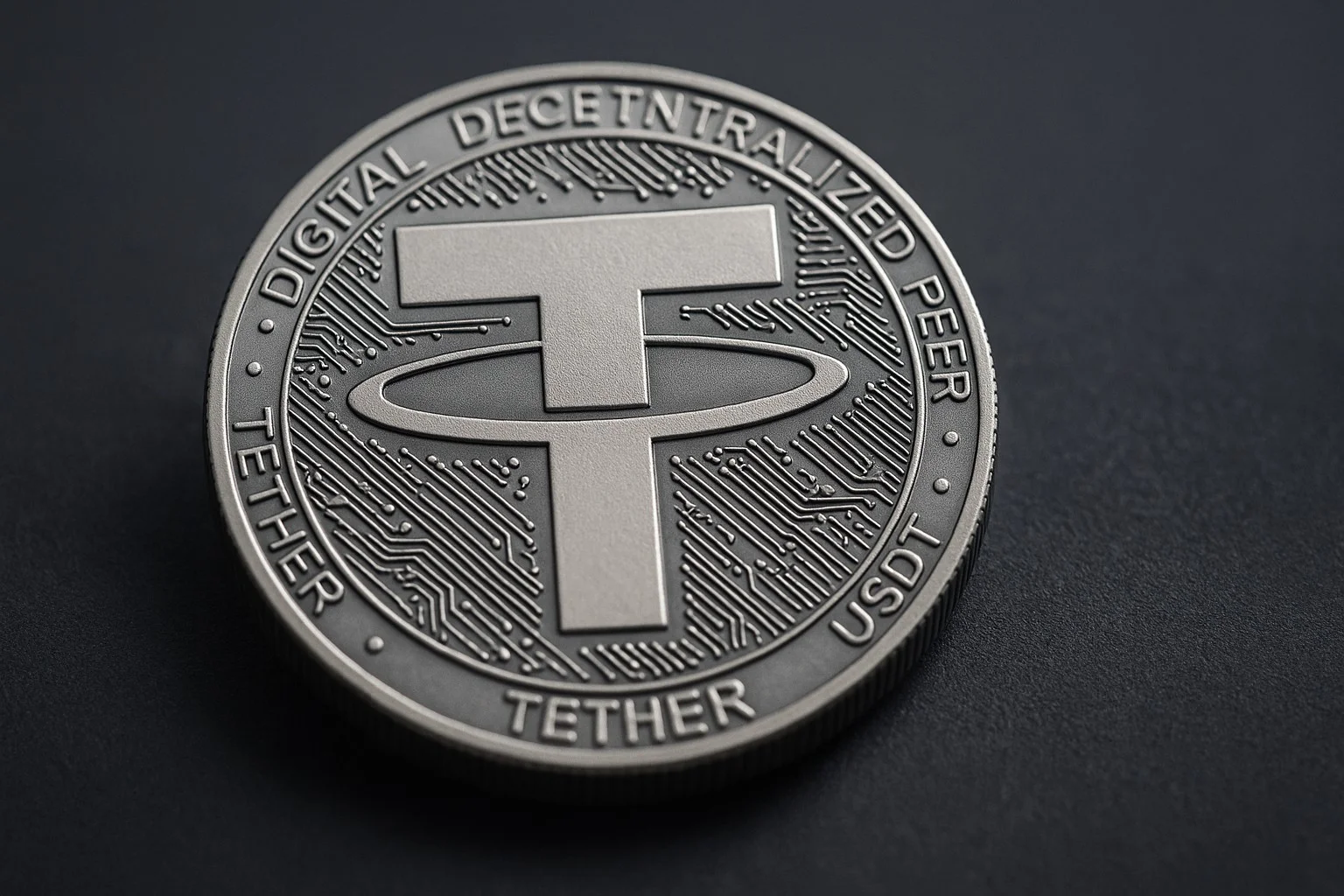
Multi-Altcoin ETF Receives SEC Approval: Launch on Hold
The U.S. Securities and Exchange Commission (SEC) approved the expedited conversion of Bitwise's 10-asset crypto index fund to an exchange-traded fund (ETF). However, in an unexpected move, the ETF's launch was halted following a regulatory decision made the same day. This sparked confusion and backlash among both investors and market analysts.According to the SEC's statement, the approved ETF will track the Bitwise Crypto Index. The index's current allocation includes major cryptocurrencies such as Bitcoin (78.72%), Ethereum (11.10%), and XRP (4.97%), as well as altcoins such as Solana, Cardano, Chainlink, SUI, Avalanche, Litecoin, and Polkadot. Crypto asset custody will be provided by Coinbase Custody, while cash management and administrative duties will be handled by BNY Mellon. According to SEC regulations, at least 85% of the fund must consist of cryptocurrencies currently approved for ETFs. Bitcoin and Ethereum are the leading assets that meet this requirement. The remaining 15% consists of coins that have not yet been approved for ETFs, such as XRP and Solana. The fund will rebalance monthly, adjusting its allocation based on index updates.The Bitwise ETF will operate similarly to traditional ETFs, as it is designed to issue and redeem shares in large blocks called "Creation Units."Unexpected hold: Launch suspendedDespite all these developments, the SEC issued a stay order halting the ETF's official launch. Based on the SEC's Rule 431(e), the fund's launch has been postponed indefinitely. As previously reported, this decision was similarly applied to Grayscale's large-cap crypto ETF. ETF Store President Nate Geraci, in a statement on social media platform X, called this decision "bizarre," stating that the SEC's initial approval and subsequent suspension of the launch created significant uncertainty for investors. "This delay clearly contradicts the approval given," Geraci said. "Products like Bitwise and Grayscale need to begin trading as soon as possible." According to Bloomberg ETF analyst James Seyffart, the SEC's sudden move may be part of a larger strategy. Seyffart suggested that the agency is attempting to delay the listing of such index funds on the exchange until its overall crypto ETF policy is clarified. Indeed, the SEC still hasn't finalized its decision on whether XRP, Solana, and similar assets are securities.The SEC's decision to curb ETFs hasn't halted the altcoin market. Over the past 30 days, Bitcoin's market dominance has declined from 65% to 60%, while altcoins like Ethereum, Dogecoin, XRP, and Cardano have seen some gains. The Bitwise ETF is currently only traded on the OTC (over-the-counter) market. However, if the SEC's decision is reversed, the fund could be listed on a national exchange, reaching a much broader investor base. This would create a new crypto investment vehicle for both individual and institutional investors.But for now, the situation remains this: While the Bitwise ETF has technically received approval, the launch has yet to be finalized.
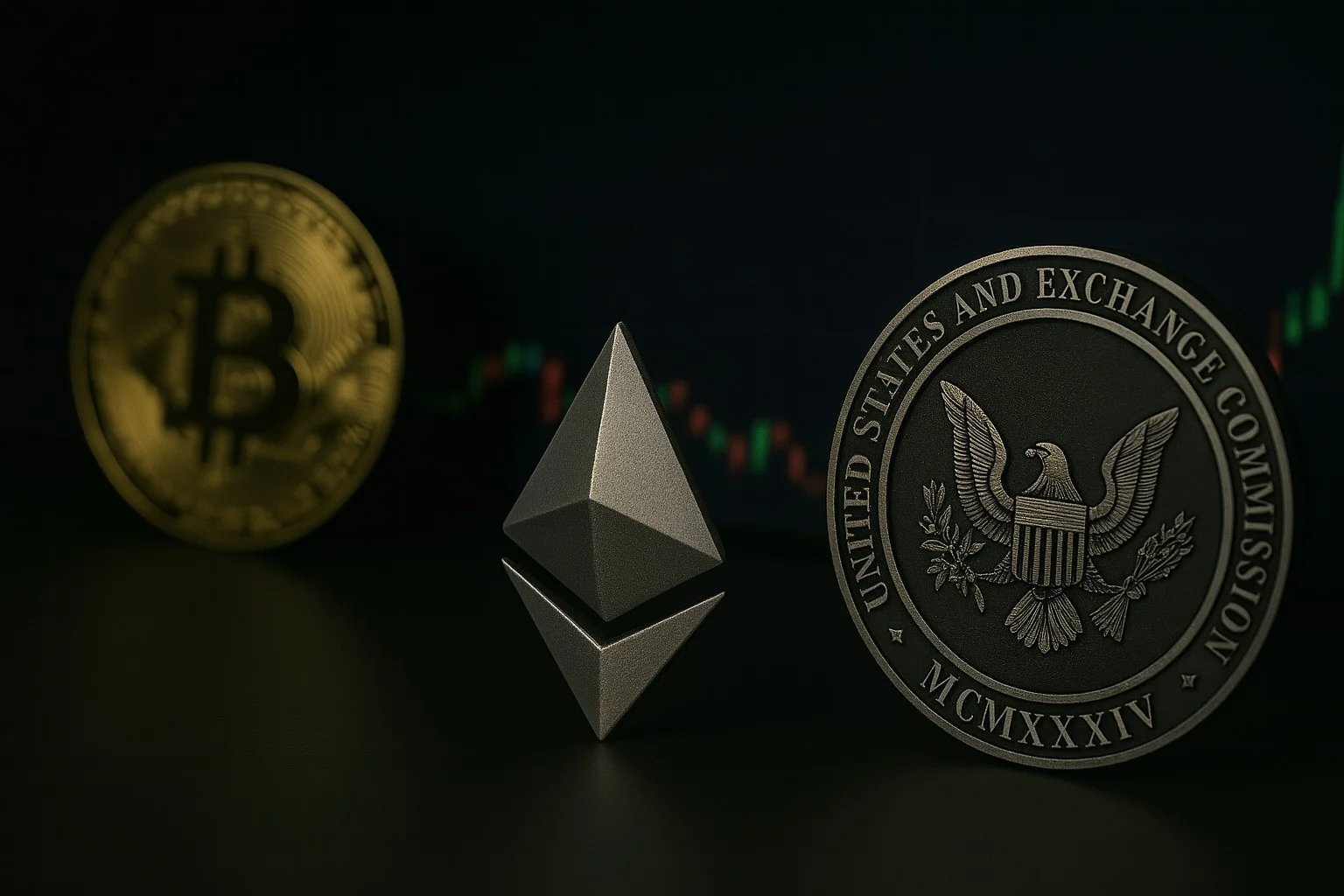
Trump-Backed Crypto Project Makes Huge Ethereum Purchase
World Liberty Financial (WLF), the cryptocurrency project backed by the Donald Trump family, is aggressively increasing its Ethereum (ETH) investments. The project recently purchased 3,473 ETH, bringing its total Ethereum holdings to 73,616. This purchase involved $13 million worth of USDC stablecoin.New $13 million purchase: $3,743 per ETHAccording to data from on-chain analytics platform Lookonchain, World Liberty Financial made its latest purchase at an average unit price of $3,743. This move brings the company's total Ethereum investment to approximately $275 million. The average purchase price is $3,272. This represents an unrealized profit of approximately $33 million based on WLF's current market capitalization. Last week, WLF purchased 3,007 ETH worth $10 million, continuing to capitalize on Ethereum's upward trend. Previously, in May, he purchased 1,587 ETH worth $3.5 million.Institutional influence on the market: ETH price reactsSuch large purchases, especially from institutional investors, can have a direct impact on the Ethereum market. Indeed, following the latest purchase, the ETH price rose to $3,763 daily. Weekly and monthly returns have also reached remarkable levels. Ethereum appears to be moving with bull market momentum. Institutions and whales flock to ETHWorld Liberty Financial's ETH holdings are not an isolated incident. A growing number of institutional investors are also turning to Ethereum. For example, investment firms SharpLink and Bitmine have recently increased their ETH holdings. Even more striking is the investment giant BlackRock's increased interest in Ethereum and its focus on crypto assets beyond Bitcoin.Another development supporting institutional interest is the new venture called Ether Machine. This $1.6 billion project is backed by industry giants like Archetype, Blockchain.com, Pantera Capital, Electric Capital, and Kraken. Such projects contribute to Ethereum gaining greater confidence among institutional investors as an investment product.ICO whales are also waking upNot only institutional investors but also long-standing Ethereum holders, who had been dormant for years, are starting to re-enter the market. For example, an Ethereum "whale" from the ICO era made its first move in nearly a decade, sending 1 ETH. This wallet still holds $2.44 million in unrealized gains.
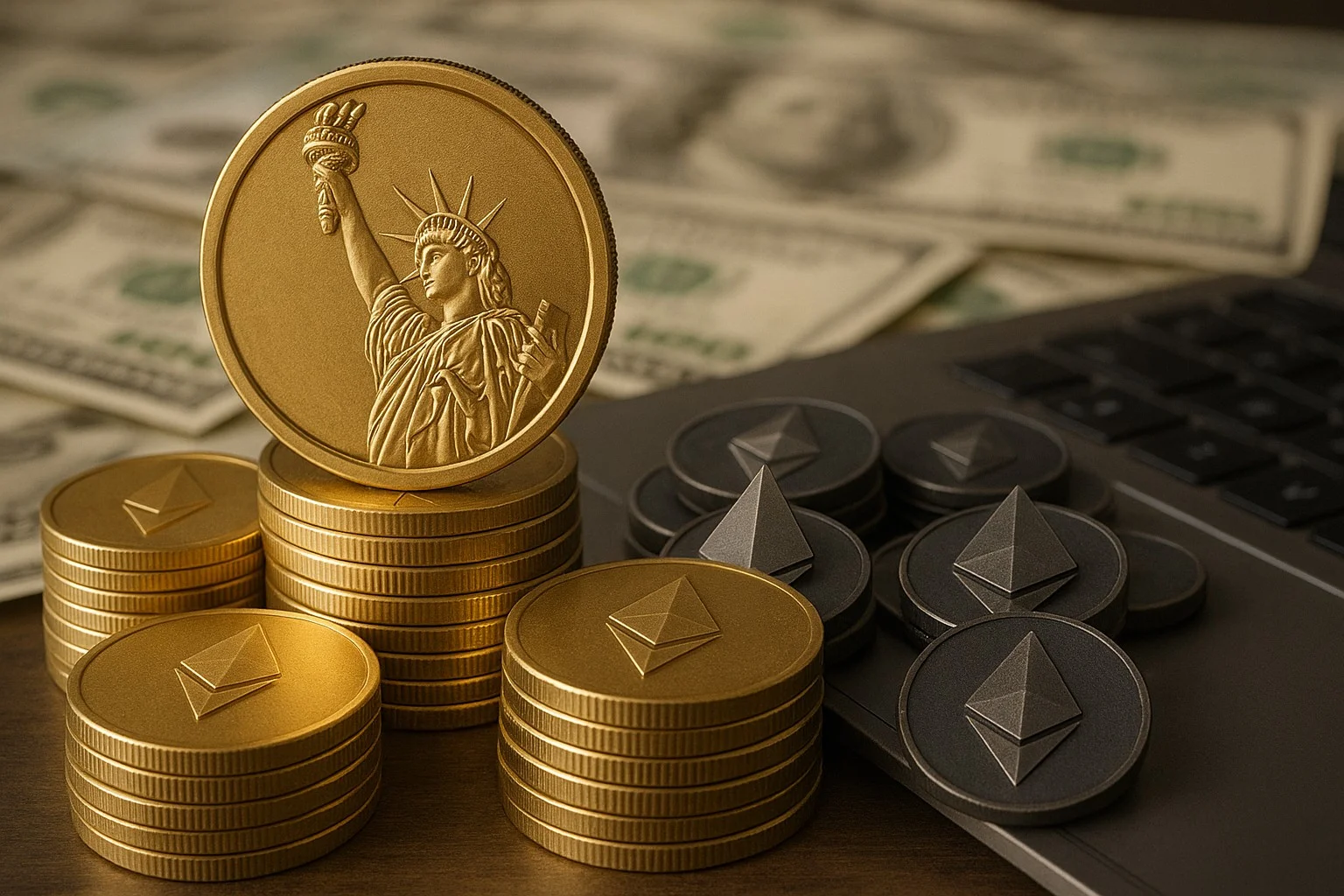
APT Comment and Price Analysis 23 July 2025
APT Technical AnalysisThe descending channel pattern is obvious on the APT chart. After volatile movements within the channel, the price of the coin has now reached both the upper border of the channel and the horizontal resistance zone, which stands around $5.60 in the short term.According to the technical outlook of the channel, it can be said that in case of an upward breakout, the price can rise as long as the channel’s length; thus, the coin can target the level of $8.40.The resistance at $5.60 and the horizontal resistance both must be broken above in order to trigger this upward momentum. Unless this resistance level gets broken, each horizontal candle will increase sell pressure and the price might drop to the lower support zones. Falling Channel Formation Short-term support levels:$5.10$4.93$4.44The price is likely to hold above these levels after a possible pullback and then bounce.Possible targets above are as follows:$6.18$6.39$7.10Main target: $8.40 (target of the channel’s breakout)These price levels overlap both with areas acting as resistance in the past and with technical formation targets.These analyses, not offering any kind of investment advice, focus on support and resistance levels considered to offer trading opportunities in the short and medium term according to the market conditions. However, traders are responsible for their own actions and risk management. Moreover, it is highly recommended to use stop loss (SL) during trades.

NIL Comment and Price Analysis July 22, 2025
NIL Technical AnalysisLooking at the NIL chart on a daily timeframe, it can be seen that the price has stuck within a triangle formation and there stand key support and resistance levels where the price might get a reaction. Triangle Formation The first support to follow is $0.3352 in case of a pullback. This price level coincides with the lower border of the triangle pattern and it is crucial for the formation to continue. If this price level gets broken downwards, we can see a drop to the strong buy level of $0.3100, where the price recovered many times before.In a positive scenario, the first resistance level the price will test is around $0.3840, which stands for the upper border of the triangle formation; therefore, it should be regarded as a key level for a potential breakout. If the price can see daily closing above the level of $0.3840, this can be considered as a confirmation of the upward breakout. We could see a test to the level of $0.4120 if the price can exceed $0.3840. If the momentum continues, the price range of $0.48–$0.50 could be targeted, as this area is both a psychological threshold and a place where sharp sell pressure was seen in the past.These analyses, not offering any kind of investment advice, focus on support and resistance levels considered to offer trading opportunities in the short and medium term according to the market conditions. However, traders are responsible for their own actions and risk management. Moreover, it is highly recommended to use stop loss (SL) during trades.
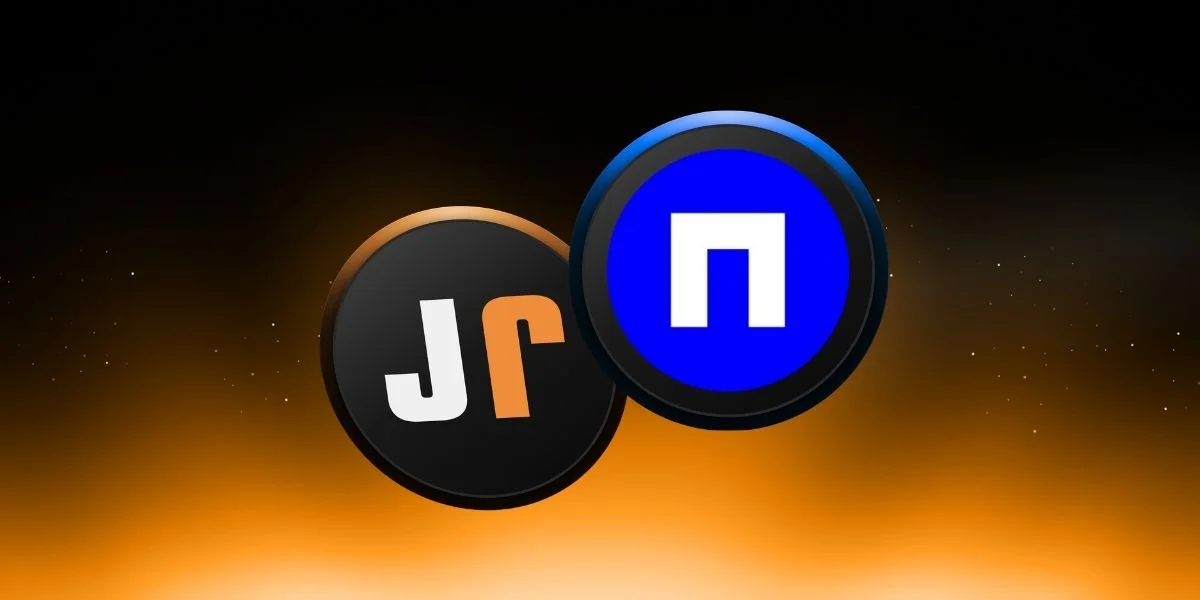
XTZ Comment and Price Analysis July 22, 2025
XTZ Technical AnalysisThe Tezos (XTZ) community recently approved a new network upgrade with a huge participation rate of 70%. The aim of this upgrade is to increase the speed and scalability of smart contracts; this upgrade is also considered a major step towards institutional adoption. With the support of this huge news, the price of XTZ jumped swiftly and broke above the psychological level of $1, below which the coin had been trading for a very long period of time. Let’s analyze the potential scenarios technically. Falling Wedge Formation Looking at the Tezos (XTZ) chart on a weekly timeframe, we see that the price of the coin has surged to the upper border of the falling wedge it has been trading within for long and has seen a rejection from there. This indicates that a strong sell pressure occurred at this key level where both technical resistance and MA200 are located.The price is under the great pressure of both the falling wedge and the resistance. While the $1.00 level stands as a key long-term resistance, the levels of $0.79 and $0.70 could be retested.The coin is still trading within the falling wedge formation. This falling wedge pattern and the rejection from MA200 suggest that the rise of the price could be short-lived. However, if we see a break above the level of $1.10 with great momentum, then we can state that a trend reversal is possible.These analyses, not offering any kind of investment advice, focus on support and resistance levels considered to offer trading opportunities in the short and medium term according to the market conditions. However, traders are responsible for their own actions and risk management. Moreover, it is highly recommended to use stop loss (SL) during trades.
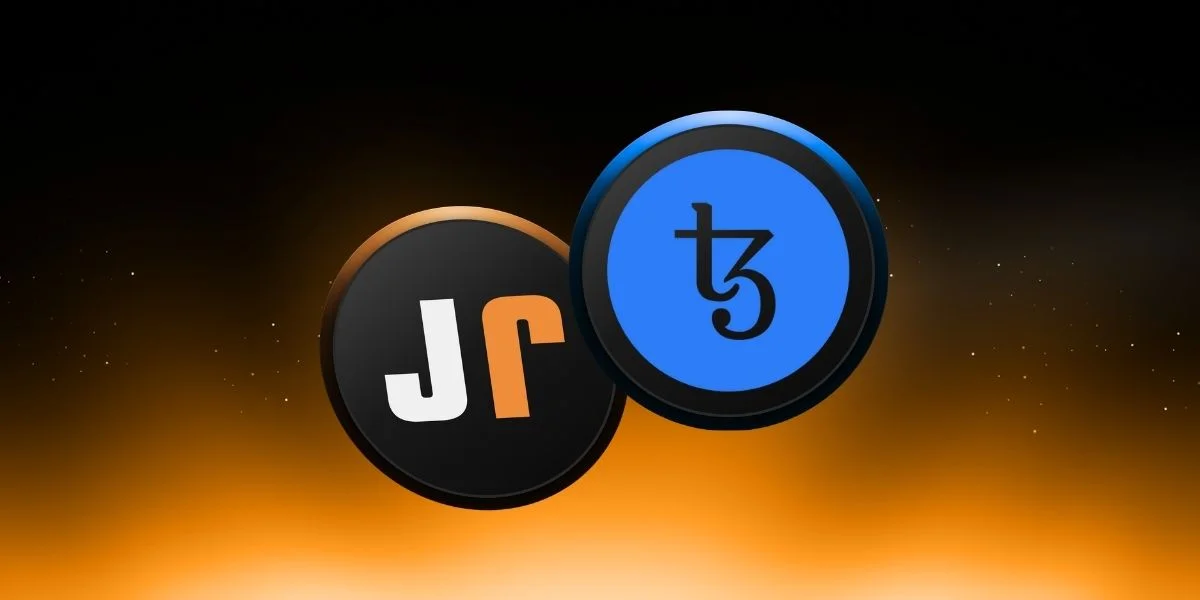
OP Comment and Price Analysis July 22, 2025
OP Technical AnalysisLooking at the Optimism chart on a daily timeframe, it is clearly seen that the short-term falling wedge formation has been broken upwards, suggesting that the price could gradually go up towards the target of this wedge formation. Though the technical target of this formation seems to be the level of $2.70, we must add that there are some strong resistance zones the price must break before reaching the target just mentioned.OP is currently trading around the zone of $0.84–$0.91, which stands as a key resistance area in the short term. If the price can break this resistance level with great momentum, the next resistance levels to follow are $1.12, $1.39, and $1.50 respectively.Intersecting not only the horizontal resistance but also the long-term falling trendline, the range between $1.40–$1.50 is technically extremely critical. Unless this critical zone gets broken, this rise could remain limited. On the other hand, if it is broken above, then the price could test $1.89 and $2.77 levels in the mid term. Summary:Falling wedge formation has been broken above in the short term.The target of this breakout is technically around $2.70Current resistance level: $0.84–$0.91The next resistance levels: $1.12 → $1.39–$1.50Closing above $1.50 suggests that both horizontal and long-term downtrend have been broken upwards.Mid-term potential targets: $1.89 → $2.77In case of a pullback: $0.66 is the first support to follow.These analyses, not offering any kind of investment advice, focus on support and resistance levels considered to offer trading opportunities in the short and medium term according to the market conditions. However, traders are responsible for their own actions and risk management. Moreover, it is highly recommended to use stop loss (SL) during trades.
